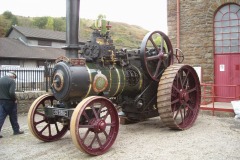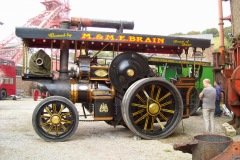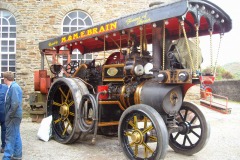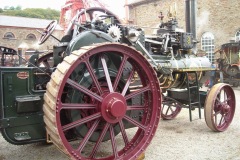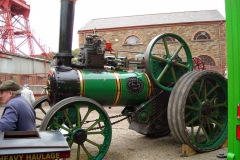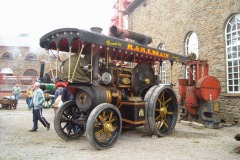NextGEN Gallery
Traction engines, also known as steam tractors, are a type of steam-powered vehicle that were commonly used in the late 19th and early 20th centuries. They were primarily used for heavy haulage and agricultural purposes, such as powering threshing machines, plows, and other farm equipment.
Here are some key features and information about traction engines:
- Power source: Traction engines are powered by steam, generated by a boiler that burns coal, wood, or other fuel sources. The steam is then used to drive a piston or pistons, which in turn power the wheels.
- Design: Traction engines typically have a large boiler mounted on a frame, with a smokestack or chimney at the front for the exhaust. The boiler is connected to one or more cylinders, which provide the power to move the vehicle. The wheels are usually large and made of iron or steel to handle the heavy loads.
- Steering and control: Traction engines are usually steered using a front axle that can be turned. The operator controls the speed and direction of the engine by manipulating the throttle, clutch, and brake mechanisms. Some models also feature a separate steering wheel.
- Versatility: Traction engines were highly versatile machines. They were used for various tasks such as plowing fields, hauling heavy loads on roads, powering sawmills, and even providing electricity in some cases. They played a significant role in early industrialization and agriculture.
- Decline: With the rise of internal combustion engines, particularly gasoline and diesel engines, traction engines gradually fell out of use in the mid-20th century. They were replaced by more efficient and convenient machines, such as tractors and trucks. However, there is still a small community of enthusiasts and preservation societies that maintain and operate traction engines for display and historical purposes.
Traction engines hold a special place in the history of mechanization and the development of transportation. They played a crucial role in powering various industries and improving agricultural productivity during their heyday.
